Department of Information Management Launches Robotics Courses in Response to the Trending Technology of AI
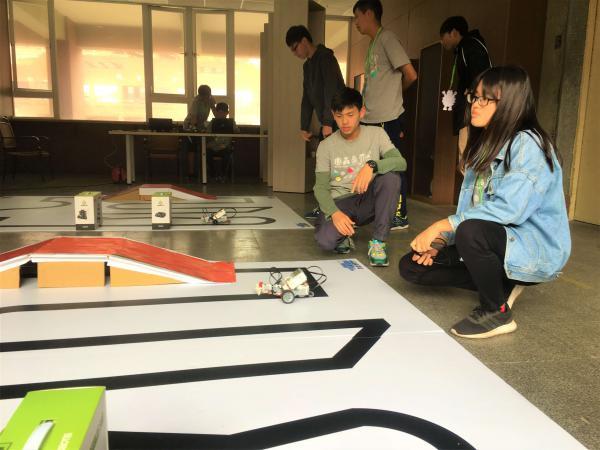
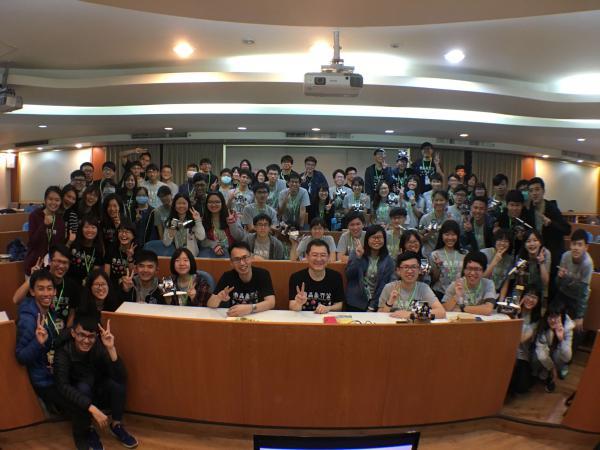
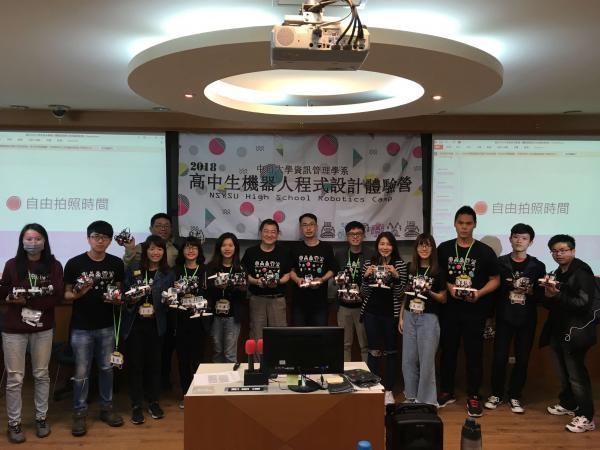
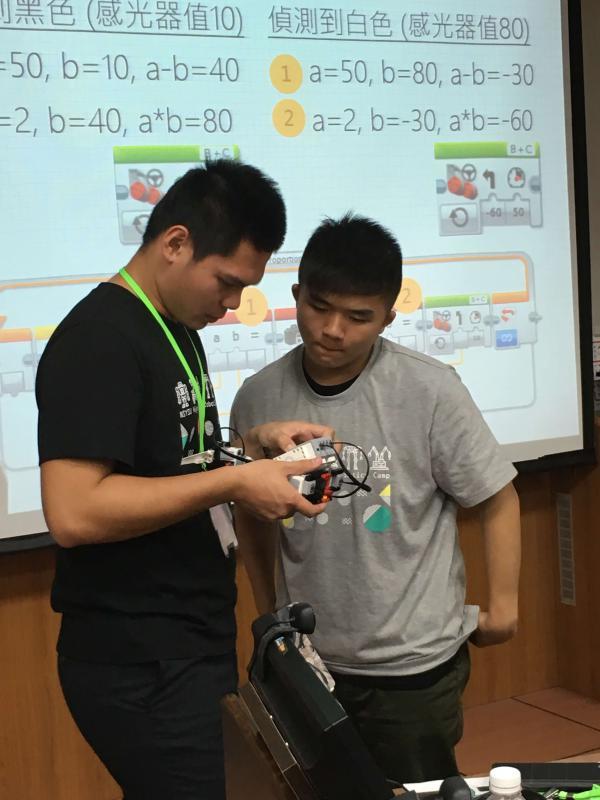
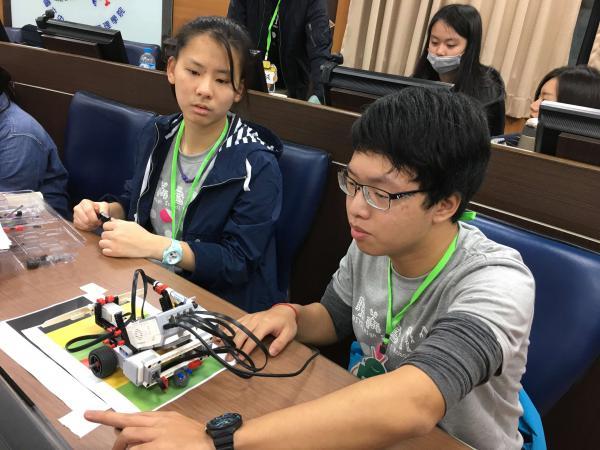
In the era of Industry 4.0, technologies including the Internet of Things, cloud computing, and smart machinery have developed rapidly. Numerous developed countries in North America and Europe have engaged in the research and development (R&D) of robots, with cutting-edge robotics technology transforming our world and smart robots becoming an indispensable element among emerging technologies. The Department of Information Management (DIM) at National Sun Yat-sen University proposes a curriculum that integrates information technology, artificial intelligence (AI), and management topics to improve students’ ability to combine and use various emerging technologies. Thus, the department can cultivate talent with an expertise of interdisciplinary AI applications that meet the requirements of businesses information technology
Chao-Min Chiu, the department chairman, explained that information management contains two major fields, namely information technology and general management. In information technology, AI, robotics, data mining, big data analytics, blockchain, and mobile applications are the highlights of current and future information development and application. The DIM offers relevant courses such as Electronic Commerce, Intelligent Robotic Systems: Design and Applications, Big Data Analytics, and Block Chain. To respond to the new trend of AI dominance in e-commerce and enterprise operations, the DIM is associated with the Smart E-Commerce Research Center, which is the only research center among all the management schools in Taiwan that receives funding from the Ministry of Education’s “Higher Education Sprout Project”. By utilizing this advantage, the DIM dedicates itself to implementing prospective studies and cultivating innovative R&D professionals.
Shih-Yi James Chien, the assistant professor who teaches Intelligent Robotic Systems: Design and Applications at the DIM, clarified that the process of developing a robotic system requires substantial theories and techniques. Moreover, its unique nature as an interdisciplinary application renders the evaluation of user needs essential for the creation of systems that comply with user habits. By focusing on an emerging technology called human–robot interaction, this course emphasizes the interaction process between the operator and robot (e.g., interactions through touch, voice, and gestures). Furthermore, the course provides a guide to relevant literature and case studies, enabling students to construct human–robot interaction models in different scenarios. For example, students are taught to compare multiple human–robot interaction models during search and rescue. To increase students’ practical experiences, this course also encourages them to adopt multiple sensors (i.e., color, touch, and ultrasonic distance sensors) to develop smart robotic systems in a creative manner.
Chiu pointed out that because most industries are highly digitized, appropriate use and management of information has become crucial; as a result, professionals with such abilities have become highly popular on the job market. Chiu suggested that in addition to informatics and management courses, students should also take e-commerce courses to be able to integrate and apply emerging technologies. For AI, one of the hottest new technologies, Chien indicated that logical reasoning and the development techniques of information systems are fundamental. Furthermore, students should take courses on psychology and cognitive science as well as develop the habits of observation and thinking to understand user behaviors and the motivations behind. Such practice is helpful for designing robotic systems that can meet daily-life needs.
Chao-Min Chiu, the department chairman, explained that information management contains two major fields, namely information technology and general management. In information technology, AI, robotics, data mining, big data analytics, blockchain, and mobile applications are the highlights of current and future information development and application. The DIM offers relevant courses such as Electronic Commerce, Intelligent Robotic Systems: Design and Applications, Big Data Analytics, and Block Chain. To respond to the new trend of AI dominance in e-commerce and enterprise operations, the DIM is associated with the Smart E-Commerce Research Center, which is the only research center among all the management schools in Taiwan that receives funding from the Ministry of Education’s “Higher Education Sprout Project”. By utilizing this advantage, the DIM dedicates itself to implementing prospective studies and cultivating innovative R&D professionals.
Shih-Yi James Chien, the assistant professor who teaches Intelligent Robotic Systems: Design and Applications at the DIM, clarified that the process of developing a robotic system requires substantial theories and techniques. Moreover, its unique nature as an interdisciplinary application renders the evaluation of user needs essential for the creation of systems that comply with user habits. By focusing on an emerging technology called human–robot interaction, this course emphasizes the interaction process between the operator and robot (e.g., interactions through touch, voice, and gestures). Furthermore, the course provides a guide to relevant literature and case studies, enabling students to construct human–robot interaction models in different scenarios. For example, students are taught to compare multiple human–robot interaction models during search and rescue. To increase students’ practical experiences, this course also encourages them to adopt multiple sensors (i.e., color, touch, and ultrasonic distance sensors) to develop smart robotic systems in a creative manner.
Chiu pointed out that because most industries are highly digitized, appropriate use and management of information has become crucial; as a result, professionals with such abilities have become highly popular on the job market. Chiu suggested that in addition to informatics and management courses, students should also take e-commerce courses to be able to integrate and apply emerging technologies. For AI, one of the hottest new technologies, Chien indicated that logical reasoning and the development techniques of information systems are fundamental. Furthermore, students should take courses on psychology and cognitive science as well as develop the habits of observation and thinking to understand user behaviors and the motivations behind. Such practice is helpful for designing robotic systems that can meet daily-life needs.
Click Num:
Share
